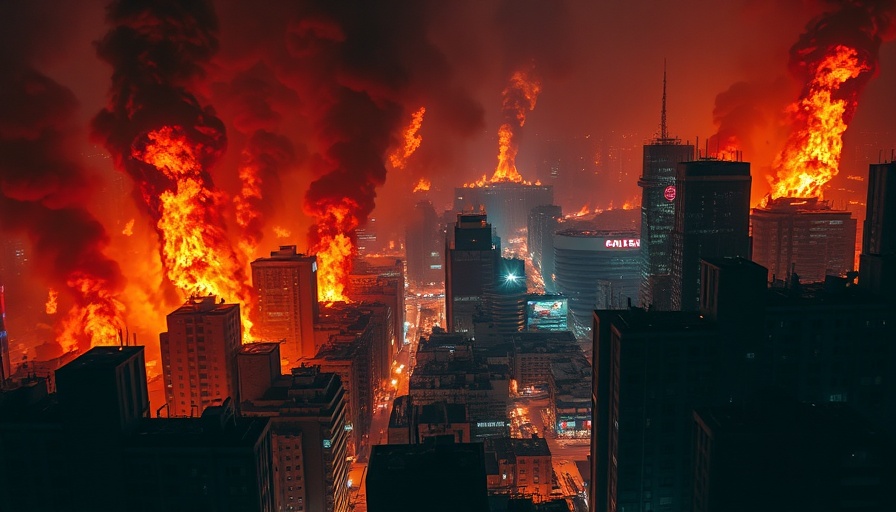
The Real Disaster Threats Facing Long Beach
While wildfires have devastated many regions of California recently, Long Beach stands apart, focusing on different natural disasters that threaten its safety — particularly flooding and earthquakes. The community is still feeling the impact of catastrophic wildfires that recently swept through nearby areas like Altadena and Pacific Palisades, where over 29 lives were tragically lost, thousands were evacuated, and economic losses soared into the tens of billions. As Long Beach residents reflect on these events, city officials and community leaders emphasize a proactive approach to prepare for its own inherent risks.
Understanding the Dangers of Climate Change
As climate change continues to raise sea levels, Long Beach faces imminent threats from rising tides and flooding, particularly in vulnerable neighborhoods like Naples and Belmont Shore. In the years ahead, such environmental changes may lead to increased flooding, making it essential for the city to invest in its stormwater management systems. Michael Bohn of Studio One Eleven underscores the urgency for modern infrastructure to mitigate these risks. Emphasizing the need for upgrades to existing buildings and adherence to today's stringent regulations, Bohn highlights that future homes will require indoor fire sprinklers.
Lessons from Past Earthquakes
Preparedness is not just about anticipating flooding; Long Beach has a considerable history of seismic activity, sitting on multiple fault lines, including the infamous Newport-Inglewood fault. The lessons learned from the devastating 1933 earthquake still shape current building codes and reinforcement strategies, guiding local construction practices to ensure greater resilience. Recent community events like the Quake Heroes Earthquake Expo illustrate the city's commitment to earthquake readiness, providing educational opportunities that strengthen local preparedness.
The expo, held in September 2024, gathered families, emergency professionals, and government officials to engage in critical discussions about safety measures in case of an earthquake. By fostering community awareness and involvement, Long Beach aims to create a culture of preparedness that recognizes the potential dangers ahead and encourages proactive measures.
Community Resilience is Key
The success of the Quake Heroes Earthquake Expo exemplifies how community engagement fosters resilience. Mayor Rex Richardson expressed, "Preparedness is our strongest ally during natural disasters and emergencies.” Events like these empower residents to understand the risks and develop response strategies that can save lives.
The Statistics reflect a similar thread; the Southern California Leadership Council emphasizes that over 200,000 individuals were displaced due to the recent wildfires and reiterates that the potential economic impact of disasters can extend for years, with repair costs ranging from $28 billion to $53.8 billion in impacted regions. Long Beach, while not immediately threatened by wildfires, must take every precaution necessary to avoid becoming a future victim of climate change and natural disasters.
Planning Future Actions
As Long Beach grapples with its vulnerabilities, the commitment to disaster preparedness encompasses a blend of community involvement, updated infrastructure, and ongoing education. From local officials to residents, everyone plays a part in staying informed and prepared, ensuring that the city not only survives potential disasters but thrives amid them. It is vital for residents to have a disaster kit, be educated on evacuation protocols, and stay informed about local emergency plans.
Looking Ahead
Ultimately, the recent catastrophes have cemented the importance of preparedness in the minds of Long Beach residents. As the community continues to revitalize from the impacts of neighboring wildfires, it emerges with a renewed commitment to safeguard against its own dangers. Long Beach’s proactive stance illustrates the necessity of educating residents, investing in infrastructure improvements, and creating a culture of readiness. Individuals need to take personal responsibility for disaster preparedness, whether in formulating family emergency plans or participating in local preparedness events.
This is a pivotal moment for Long Beach to learn from others’ misfortunes and embrace best practices in disaster planning and response. Will you take the necessary steps today to ensure your safety and that of your family?
 Add Row
Add Row  Add
Add 




Write A Comment